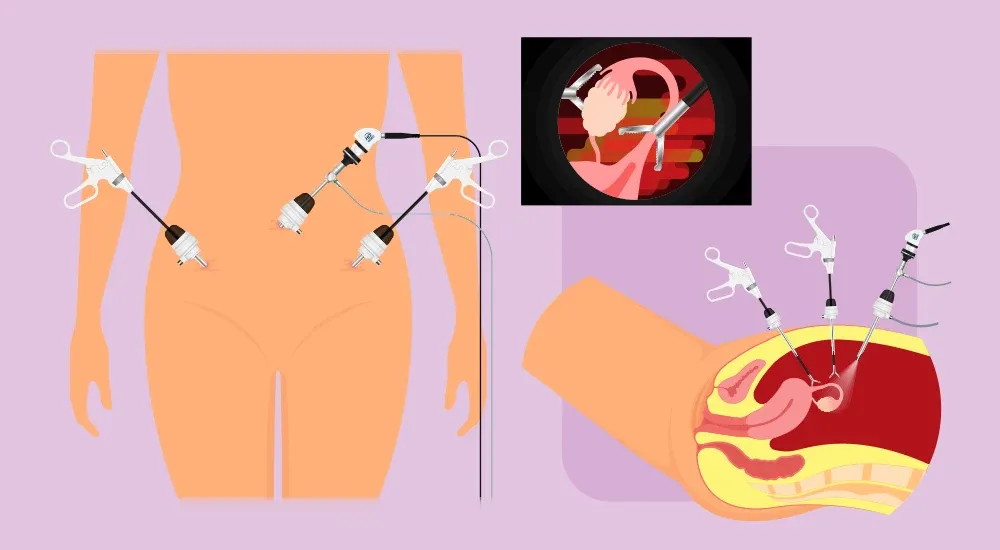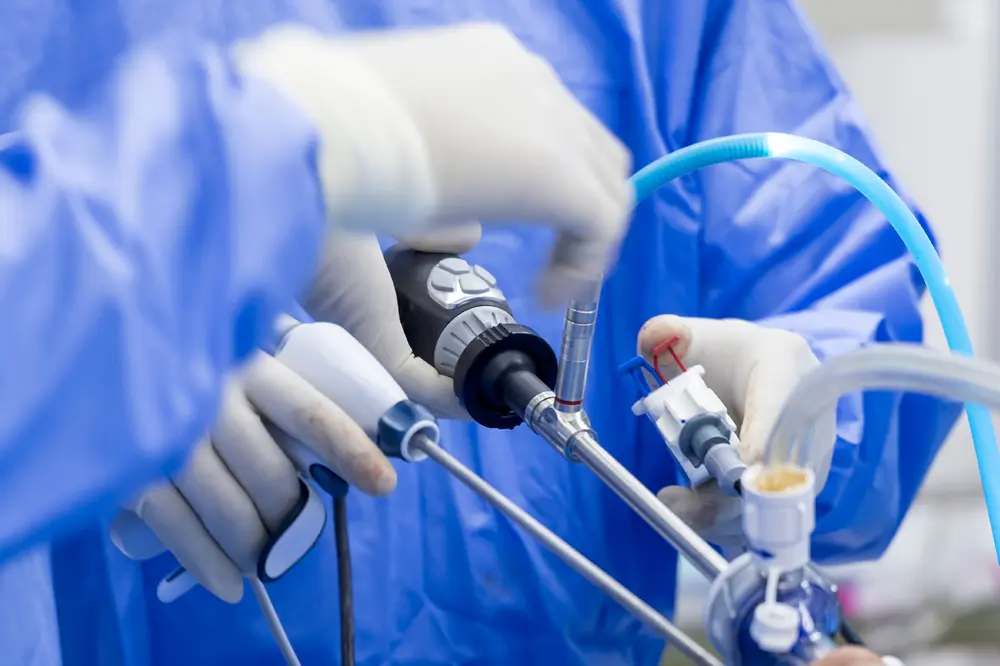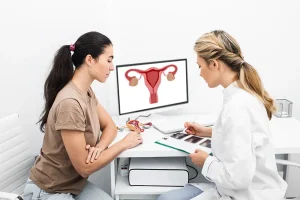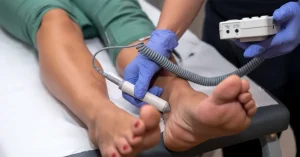What Is a Hysterectomy?
When significant health conditions affect the female reproductive system, such as uterine fibroids, gynecological cancers, or endometriosis, a procedure known as a hysterectomy may be necessary.
A hysterectomy involves surgically removing the uterus and may be performed as either a partial or total procedure.
In a partial hysterectomy, only the uterus is removed. In a total hysterectomy, the procedure also involves removing part of the cervix (upper section of the vagina) along with portions of the fallopian tubes.
What Is a Laparoscopic Hysterectomy?
A laparoscopic hysterectomy is a modern, minimally invasive surgical approach where the surgeon makes a small incision in the abdomen to insert a tube equipped with a miniature video camera. This allows the surgeon to view the internal area on a monitor with high precision.
Additional small incisions in the abdomen or vagina enable the insertion of specialized surgical instruments to complete the removal of the uterus.
Laparoscopic Hysterectomy vs. Abdominal Hysterectomy
In a traditional abdominal hysterectomy, the surgeon makes a much larger incision, typically between 7 and 15 centimeters, across the lower abdomen to access the uterus directly.
This larger incision disrupts multiple layers of abdominal tissue, increasing recovery time because each layer must heal fully before the patient can return to normal physical activity.
Why Choose a Laparoscopic Hysterectomy?
With its smaller incisions, a laparoscopic hysterectomy minimizes the trauma typically associated with abdominal hysterectomy wounds.
Benefits include:
- A shorter hospital stay after surgery;
- Significantly reduced pain;
- Faster overall recovery;
- Lower risk of post-operative infection.
From an aesthetic perspective, smaller incisions also result in minimal scarring, which fades more quickly than scars from traditional open surgery.
My Doctor Has Recommended a Total Hysterectomy
If your doctor has suggested surgery, it is wise to seek a second opinion to ensure you understand all available options. VenArt Clinic features highly regarded European and Romanian surgeons specializing in advanced laparoscopic techniques and modern surgical technologies. Even a short consultation at VenArt can help you choose the most suitable treatment plan for your situation.

Will I Still Be Able to Have Sex After a Hysterectomy?
The answer depends on your individual circumstances. Conditions like endometriosis can cause persistent pelvic pain, often making sexual activity uncomfortable. For some patients, hysterectomy helps relieve or eliminate pain, leading to a better sexual experience.
However, certain types of hysterectomy remove part of the cervix, potentially affecting nerve pathways near the upper vagina. Opting for a supracervical hysterectomy preserves the cervix and may help maintain these nerve connections.
What Is a Laparoscopic Supracervical Hysterectomy?
In a supracervical hysterectomy, the cervix is left intact while removing the rest of the uterus. When performed laparoscopically (see “What Is a Laparoscopic Hysterectomy?”), this technique offers advantages over older methods such as abdominal hysterectomy.
Your decision to keep or remove the cervix should be made in consultation with your surgeon, taking into account your specific health condition, potential benefits, and associated risks.
What Is the Best Choice?
Laparoscopy has been in use since 1910 and is now considered the preferred method for many surgical procedures. This approach not only shortens recovery time but also reduces physical trauma to the body.
When applied to hysterectomy, laparoscopy provides these same benefits, enabling patients to return to normal daily activities more quickly. A consultation with VenArt surgeons will give you the detailed information you need to make an informed decision. You can contact us.











